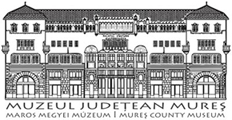Marisia - Maros Megyei Múzeum Évkönyve 34-35. (2014-2015)
Articles
32 D. M. Cioatä - К. В. Ötvös Modern building existing in 1962 demolished until 2012 Modern building still existing in 2012 Modern road Evaluation trench/section Fig. 1. Excavation plan from 1962 made by Sz. Pánczél based on Székely 1962, 333, pl. 2. exact place of discovery,7 Ve|el-Micia8 (Hunedoara), two items from Cáseiu-Samum (Cluj)9 and live items from Turda-Potaissa (Cluj).10 The armor accessories were introduced in military inventory the earliest around the half of the 2nd century AD11 with the spread of a new type of a semi-rigid lorica squamata which enabled the attachment of the scales vertically and not only 7 Pärvan 1926, 9, 26, Fig. 15, Pi. 5; Petculescu 1975, 82-83, Fig. 2/2-3; 1986, 154, Fig. 4/2. 8 Petculescu 1986, 154, Fig. 4/3, nota 14. 9 Isac 2003, 243, fig. 5/2; Isac - Bärbulescu 2008, 213, 217, Abb. 5, 27. 10 Petculescu 1986, 154; Isac - Bärbulescu 2008, 216-218, Abb. 22-26; Isac - Bärbulescu 2009, 72, 75 - 77. 11 VanDaele2002, 111; Aurrecoechea2007,171; Aurrecoechea 2010, 88. horizontally.12 These scales were quadrangleshaped with a slightly curved upper side in order to imitate the curve of the neck and were fastened in pairs in the area of the chest thus providing an easier way for clothing such type of armor.13 M. Bishop proposed the use of breast plates including the case of the so-called “Alba Iulie-type armor”14 (a combination between the lorica squamata and segmentata) identified at the base of a statue found15 in the above mentioned town. It seems that the representation can also be confirmed archaeologically through a find from Santa Maria 12 Bishop - Coulston 1993, 117; Bishop 2002, 62. 13 Van Daele 2002, 110; Aurrecoechea 2007, 171. 14 Bishop 2002, 62-65. 15 Diaconescu 2014, 153-155.
